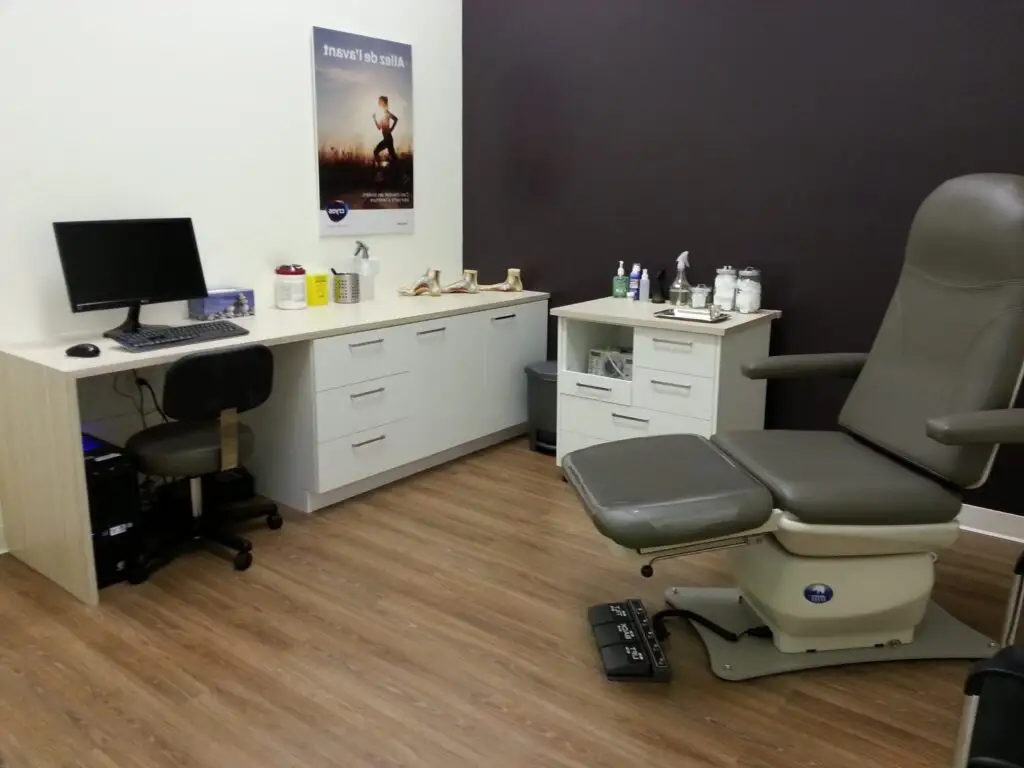
As a podiatrist/owner, Dr. Marie-Ève Berthiaume has been welcoming patients to her clinic in Montreal East since 2015. Passionate about podiatry, Dr. Berthiaume has added several complementary courses to her university studies completed in 2011 at the Université du Québec à Trois-Rivières, some of which include wound care practice and neuro-proprioceptive taping.
In 2016 the Clinic welcomed a second podiatrist: Dr. Catherine Roy Bénard. Together, the two podiatrists, supported by their secretaries, a foot care nursing assistant and an assistant podiatrist ensure you always feel welcome and comforted at the Clinique.
Pointe-de-l’Île podiatry clinic
115-1300 boul. Saint-Jean-Baptiste
Pointe-aux-Trembles,
QC H1B 4A4
directions
1-438 795-6417 Toll free
Monday
8:30 - 19:30
Tuesday
8:30 - 18:00
Wednesday
8:30 - 19:30
Thursday
8:30 - 18:00
Friday
8:30 - 17:00
A podiatry clinic focused on your health
The first podiatry clinic established in Rivière-des-Prairies-Pointe-aux-Trembles, the Clinique podiatrique de la Pointe-de-l’Île strives to offer its patients quality care. The team remains at the forefront of the latest technological advances in podiatry treatment, and offers a wide range of services, including emergency appointments.




Frequent problems
- Pain : foot, ankle, leg, knee, hip and lower back
- Ingrown toenail (onychocryptosis)
- Corns, calluses and severe corns
- Heel spur (Lenoir’s thorn)
- Foot bunion (hallux valgus)
- Leg disorders caused by venous insufficiency
- Osteoarthritis of the knee
- Big toe osteoarthritis (Hallux rigidus)
- Foot arthritis : symptoms and treatments
- Hematoma under the toenail
- Foot blisters : symptoms and treatments
- Functional hallux limitus
- Toenail trauma : symptoms and treatments
- Diabetic foot ulcer : symptoms and treatments
- Joint wear and tear : symptoms and treatments
Treatments provided
- Plantar orthotics: types, benefits, and adaptation tips
- Cortisone injections
- Foot care – Nails, corns and calluses treatment
- Evaluating Children’s Feet
- Biomechanical exam : symptoms and treatments
- Foot ultrasound imaging
- Ultrasound guided injection
- ShockWave therapy : therapeutic benefits and treatment
- Nail culture : importance, advantages and procedure
- Therapeutic foot taping
- Manual foot therapy : personalized treatment plan
- Postural evaluation
- 2D and 3D digital imaging
- Podopediatrics treatments
- Stress fracture in the foot
Request an appointment at the clinic
Leave us your contact details and availability and we will contact you to make an appointment.
Please note that if you are seeking podiatry services following a work-related accident (CNESST) or a road accident (SAAQ), please contact us before your appointment to obtain more information about the reimbursement procedures.









